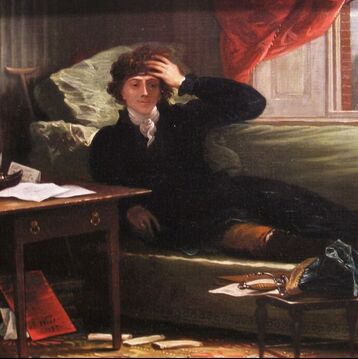Further Reading
Władysław Ludwik Anczyc, Kościuszko pod Racławicami, 1881 Nicolas Boston, “How the defacement of two statues could lead to Poland’s reckoning with its Black history,” New East Digital Archive. Michał Burczak, “The Creation of an Enduring Legend of the National Hero: A Comparison of Tadeusz Kościuszko and George Washington,” The Polish Review 59, no. 3 (2014): 25–39. Lauren Daen, “Revolutionary War Invalid Pensions and the Bureaucratic Language of Disability in the Early Republic.” Early American Literature 52, no. 1 (2017): 141–67. Heinrich Elsner, Befreiungskampf der nordamerikanischen Staaten (1835) Halina Filipowicz, “School for Patriots? The Foundational Dramas of the American and Polish Revolutions Revisited,” Canadian Slavonic Papers / Revue Canadienne Des Slavistes 52, no. 1/2 (2010): 19–45. Halina Filipowicz, Taking Liberties: Gender, Transgressive Patriotism, and Polish Drama, 1786–1989 (Athens, OH: Ohio University Press, 2014) Mary Monica Gardner, Kościuszko: A Biography (1920) David A. Gerber, Disabled Veterans in History. Thomas S. Gladsky, Princes, Peasants, and Other Polish Selves: Ethnicity in American Literature (1992) Antoni Gronowicz, trans. Samuel Sorgenstein, Gallant General: Tadeusz Kościuszko (New York: Scribner & Sons, 1947) John Z. Guzlowski, “Antoni Gronowicz,” The Polish Review 58, no. 4 (2013): 81–89. Marek Haltof, “Polish Silent Cinema (1896–1929).” In Polish Cinema: A History, 9–40. New York: Berghahn Books, 2019. Julius Ursyn Niemcewicz, Pamiętniki Czasów Moich (Leipzig: Brockhaus, 1868) Alex Storozynski, dir. “Kościuszko: Człowiek, który wyprzedził swoje czasy,” aired on TVP Historia, 2020. David M. Turner, Disability in Eighteenth-Century England: Imagining Physical Impairment. London: Routledge, 2012 https://www.warszawa1939.pl/obiekt/dobra-47 [Atelier i laboratorium Falanga] Related Content Tadeusz Kościuszko, Part I: International Icon, Revolutionary Hero Music: "Evening Melodrama" by Kevin Macleod (www.incompetech.com)
0 Comments
Leave a Reply. |
Site Map |
© 2013-2024 Footnoting History. All rights reserved.
Footnoting History and the Footnoting History logo
are trademarks of Footnoting History, NY. Footnoting History operates under a SAG-AFTRA Micro-Monetized Podcast Agreement. |


